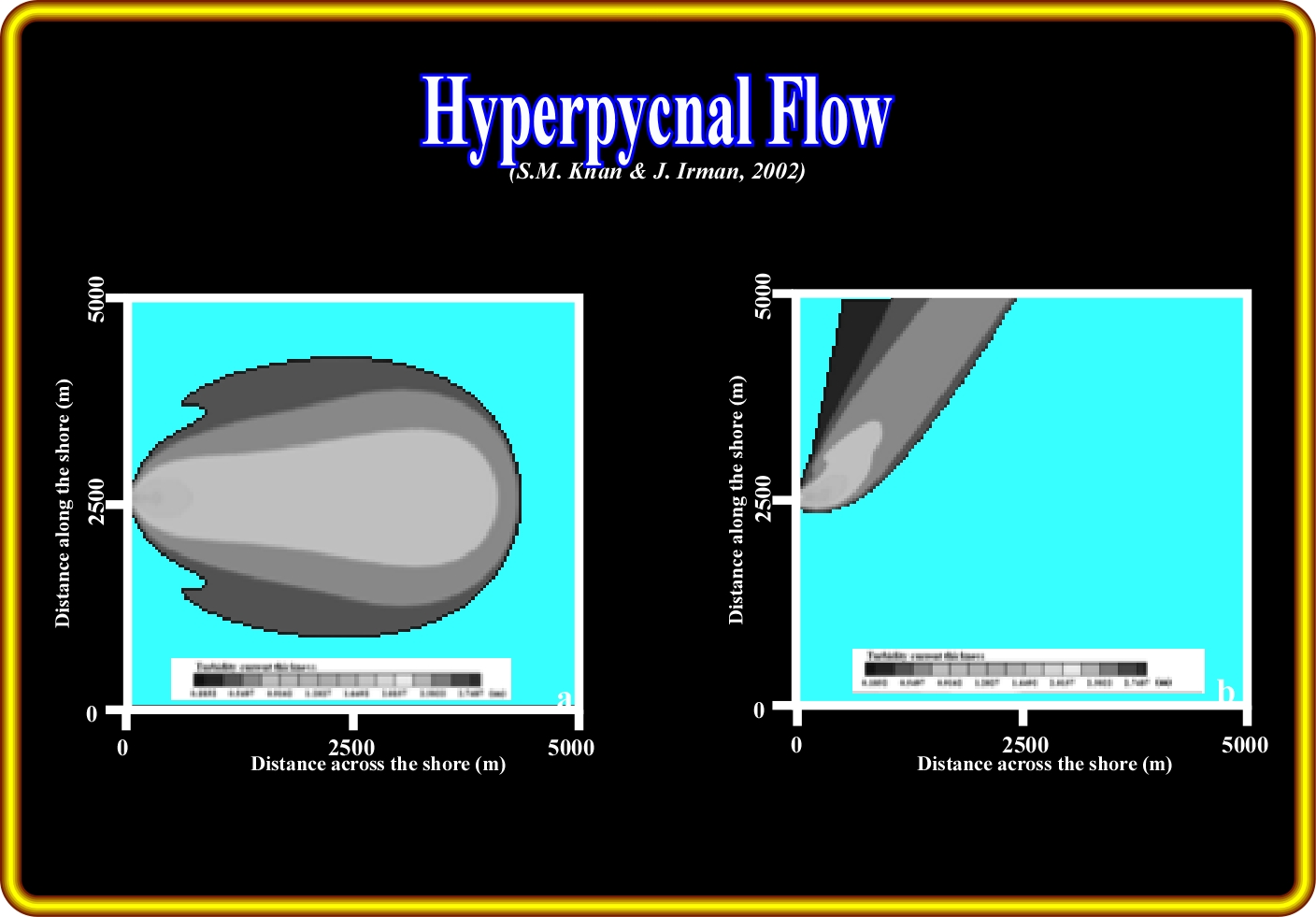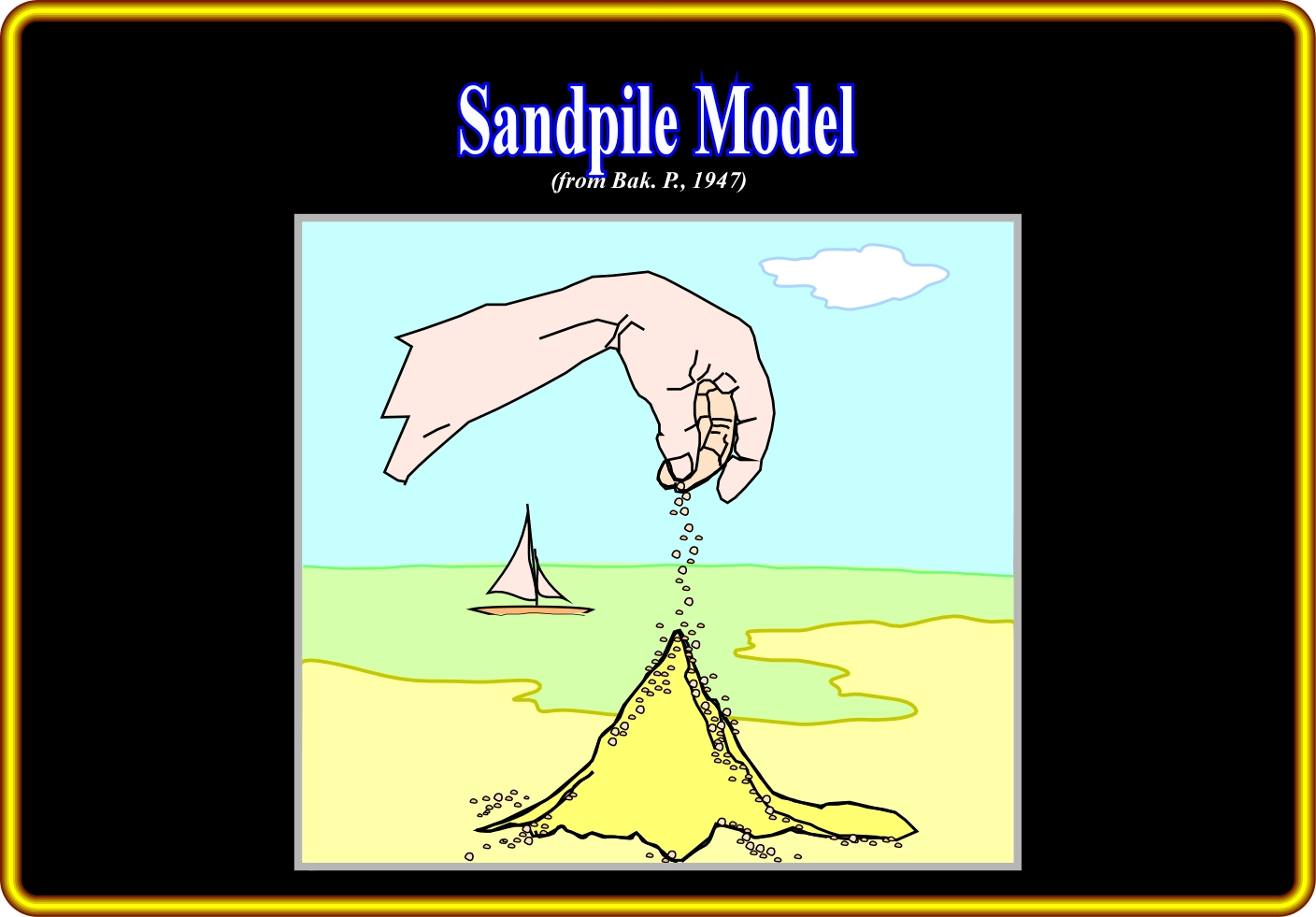

V) Depositional Turbidite Systems
Depositional systems are defined as three-dimensional assemblages of lithofacies, generally, linked by active (modern) or inferred (ancient processes) environments (Fisher and MGowen, 1967). The term lithofacies is here redundant. Indeed, facies was defined by Gressly, in 1835, as a lithology with a characteristic associated fauna. In depositional systems, facies (lithology) are synchronous and genetically related. In other words, when a facies disappears, all others disappear too. In a deltaic system, for instance, there are three synchronous and genetically related facies : (i) Prodelta ; (ii) Delta front and (iii) Delta plain. If a prodelta disappears, the other facies disappear too, i.e., the deltaic depositional system does not exist any more. In turbidite deposits, very often, the depositional systems are not synchronous. For instance, bypass or transfer zones are common on the slope and so the final facies along the depositional profile are not coeval.
In Mutti's turbidite systems (Type II, for instance), from the shelf break basinward, three main non-synchronous facies can be found :
(i) Channel-fill thick-bedded sandstone ;
(ii) Thick-bedded sandstone lobes and
(iii) Thin-bedded lobe fringes.
However, if the thick-bedded sandstone lobes (ii) are not present, the others facies are not present either. They are more or less genetically related, and so the turbidite systems disappear.
In the literature there are numerous definitions for turbidite systems (Mutti & Normark, 1987; Mutti, 1992, etc.). Presently, the most used are:
A) A genetic unit, which records a series of genetically related erosional and depositional events that occurred in virtual stratigraphic continuity and are expressed by erosional and depositional elements respectively.
B) Depositional systems denoting bodies of rock where channel-fill deposits are replaced by non-channelized sediments in a down-current direction.
These definitions are generic and valid for a large spectrum of depositional systems (alluvial, deltaic, turbiditic, etc.). They do not define the stratigraphic character and genetic significance of the boundary surfaces. Tentatively, we will propose to state the meaning of turbidite systems as:
“A succession of layers deposited by gravity currents which take place between two depositional equilibrium phases of the margins of the basin, whether marine or lacustrine”
Such a definition is faithful to Vail's turbidite model as well as to Mutti's turbidite depositional systems. In fact, a depositional equilibrium phase is a period of time during which the profile of the external shelf-upper slope is stable (no sliding or collapse phenomena) and the sediment supply is not big enough relative to the size of the coastal area and/or the subsidence ratio, that means, when any sediment is carried beyond the shelf break (deep water setting) or seaward of the limit of neritic-bathyal (ramp margin setting).
The break-up of such equilibrium by a relative sea level fall or other geological features induces the formation of turbidite currents and subsequently turbidite depositional systems :
- For instance, when the shelf-upper slope profile is not stable, large slump-scars are created in the upper part of the slope. Then, they cut into the shelf (continental platform) by headward erosion and eventually form canyons. At the same time, huge sandy turbidite fans will be deposited in the deeper part of the basin, if the slope contains sufficient sand.
- Similarly, when terrigeneous influx is too big to be accommodated (deposited) on the shelf, sand-rich turbidite fans will be deposited at the toe of the slope. Relative sea level falls create a similar geological situation, since they decrease the size of shelfal accommodation.
In fact, as said previously, the triggering of turbidite currents (gravity flow), which carry sediments into deep water environments, can be caused by sliding phenomena induced by: (i) Overloading of sediments ; (ii) Earthquakes ; (iii) Halokinesis (salt tectonics) ; (iv) Shalokinesis (shale tectonics) ; (v) Fusion of hydrate layers ; (vi) Hyperpycnal flows ; (vii) Storm waves ; (viii) Tectonic movements ; (ix) Upwelling currents, etc.

Hyperpycnal flows, when the water entering a body of water is denser than the water that it enters, can create turbidity currents. Its flow pattern is that of a plane jet as in the above simulated hyperpycnal flow (running during 4 hours) in the Adriatic Sea, generated by plunging of the Potenza River. In the left, the simulation suppose no along-shore current , while in the right, it assumes the presence of an alongshore current of 50 cm/s, which interacts with the hyperpycnal flow. In fact, in certain geological settings, the sedimentary flux to the sea can dramatically increase when climatic conditions provide sufficient amounts of water to produce catastrophic floods. These floods, generally flush floods, generate a mixture of water and sediments that can enter sea water with sufficient velocity and sediment concentration to produce hyperpycnal flow (∂hf > ∂sw) and related shelf-sustained turbidite currents.
In Mutti's turbidite depositional systems, different geological factors control the geometry and facies distribution of the turbidite system (Mutti & Normak, 1987 and 1991). They can be grouped in two major families:
(i) The physiography of the shelf, slope and abyssal plain.
(ii) The initial texture and lithological composition of the turbidite current and its evolution.
The first family (width and dip of the shelf, dip of the slope, presence or not of mini-basins and/or canyons in the slope, trench basin or flat abyssal plain) is related to the geodynamic and tectonic evolution of the basin. The second one (gravel rich, sand rich, mud rich, siliciclastic or carbonate) is related to the depositional systems developed landward of the shelf break (carbonate platform, reefs, muddy estuary, braided-deltas, alluvial fans, etc.).
Theoretically, turbidite systems seem to correspond to large natural geological complex systems with many components to evolving into a poised, critical state, way out of balance, where minor disturbances may lead to catastrophic events. Turbidite systems can be taken as self-organized critically systems (SOC). In order to make this concept less abstract it is interesting to summarize below the Bak’s sandpile model :

The complex phenomena observed everywhere indicate that nature operates at the self-organized critical state. The behaviour of the critical sandpile mimics several phenomena associated with complexity that can easily be observed across many sciences. This is particularly true for in geological sciences, where large catastrophic events as certain turbidite depositional systems, which cannot be understood within the set of references developed within the conventional scientific domains. The theory of complexity is able to explain such phenomena, at least partially.
Consider the scenario of a child at the beach letting sand trickle down to form a pile. At the beginning, the pile is flat, and the individual grains remain close to where they land. Their motion can be understood in terms of their physical properties. As the sand pile grows steeper, there will be little sand-slides. As time goes on, the sand slides becomes bigger and bigger. Eventually, some of the sand slides may even span over most of the pile. At that point, the systems is far out of balance, and its behaviour can no longer be understood in terms of the behaviour of the individual grains. These avalanches form a dynamic of their own, which can be understood only from a holistic description of the properties of the entire pile rather than from a reductionist description of individual grains: the sandpile is a complex system. This scenario is quite similar to what happens in certain turbidite depositional systems developed at the toe of the continental slope.
The sandpile is the canonical example of a Self-Organized Critical system (SOC). It exhibits punctuated equilibrium behaviour, where periods of stasis are interrupted by intermittent sand slides (as in turbidite systems).